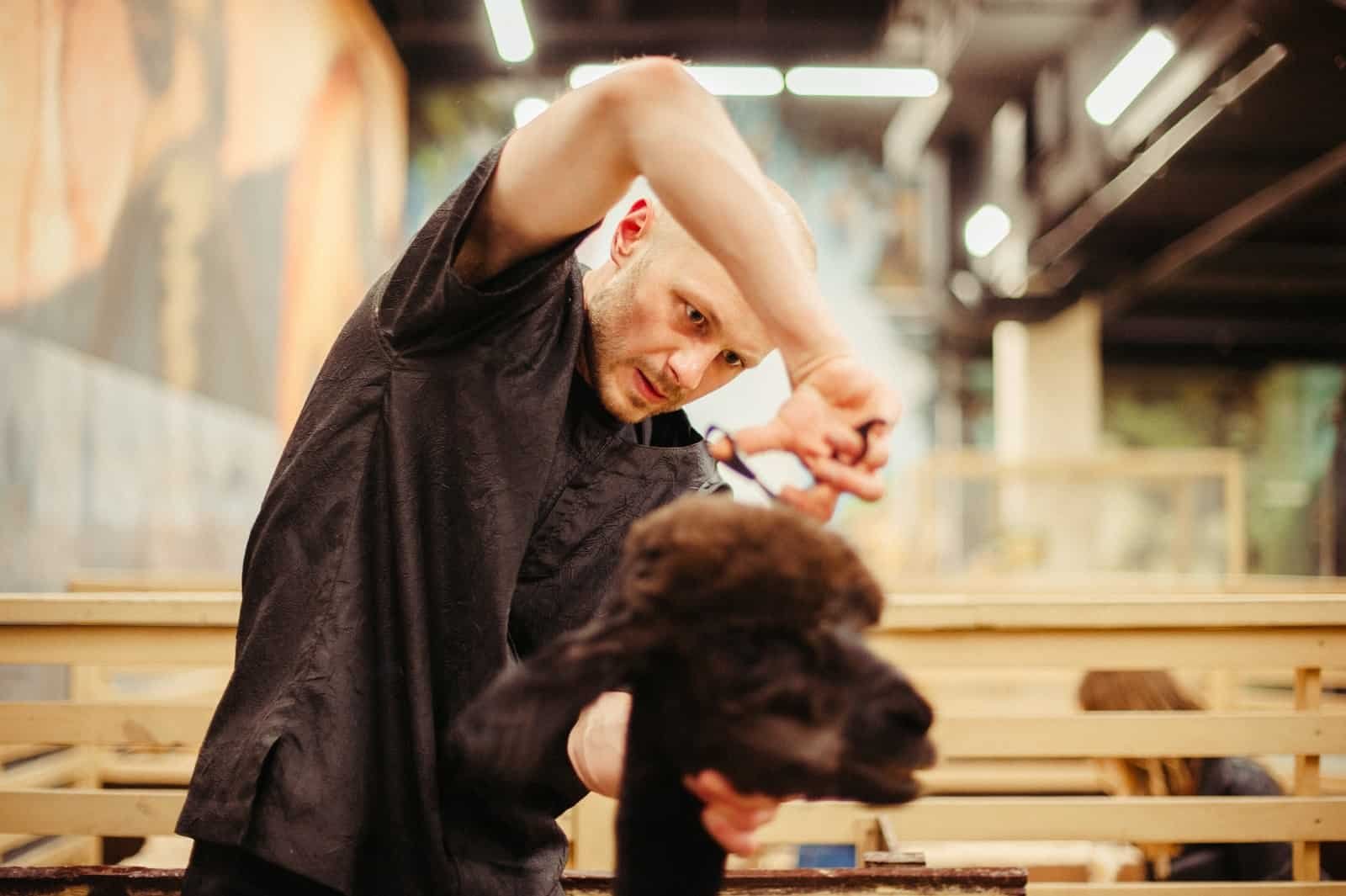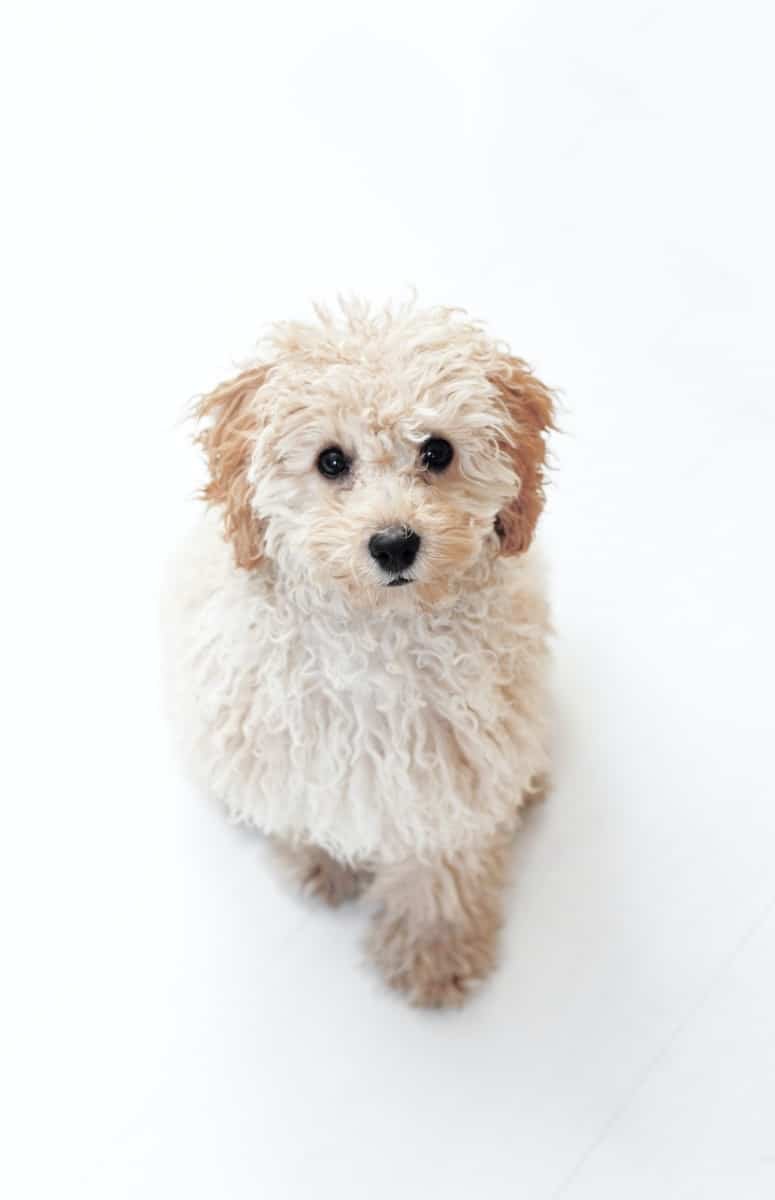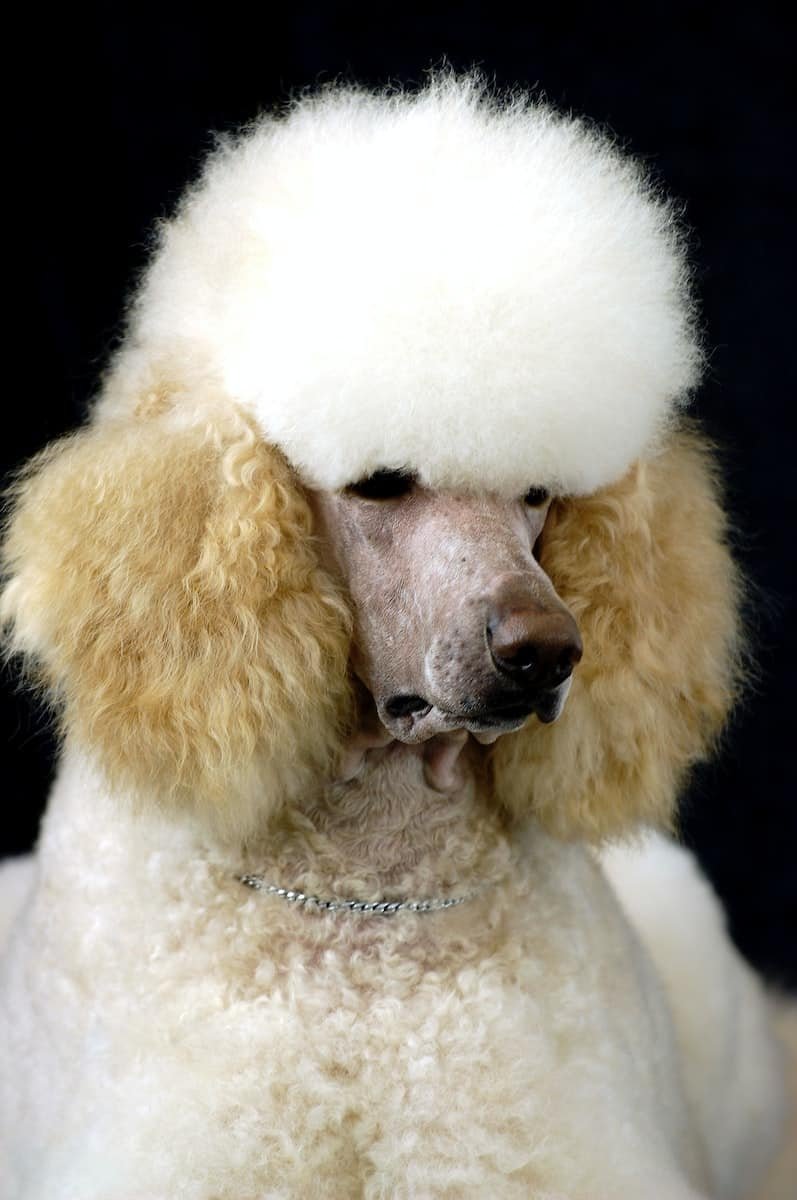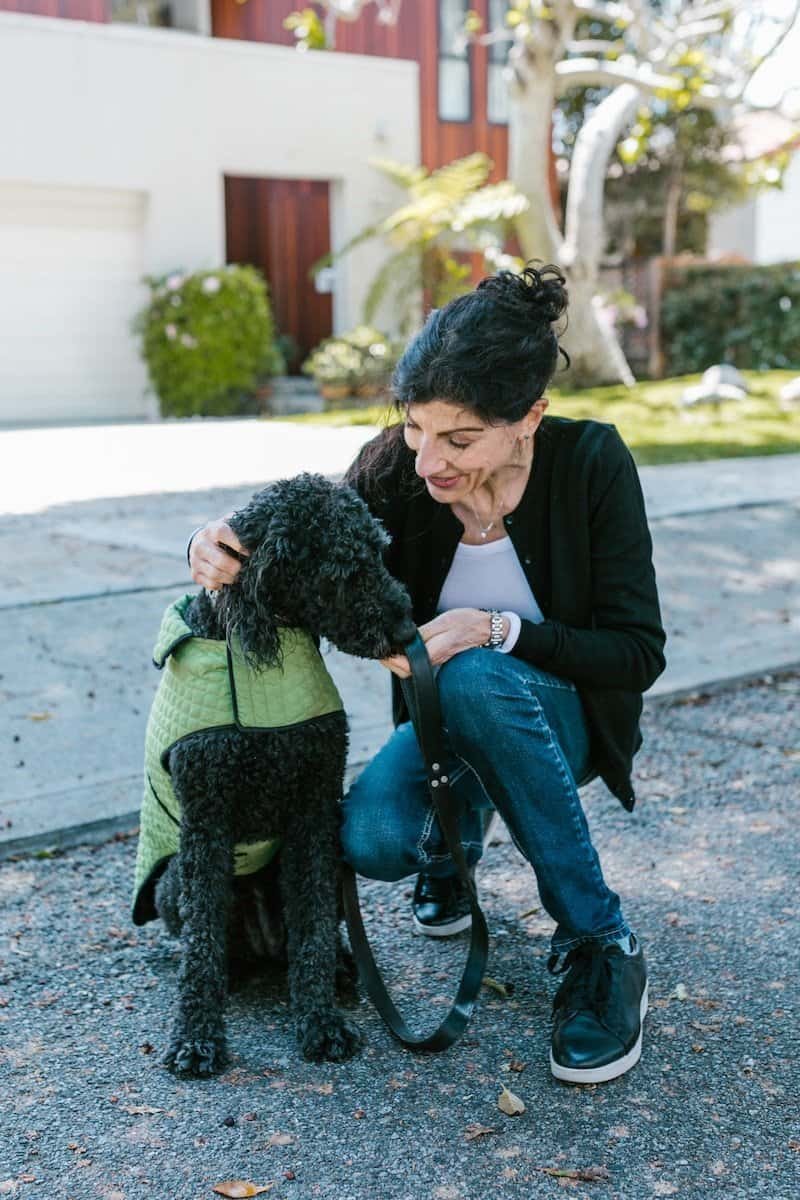
Are you researching the best Poodle haircuts for the professional dog groomer to handle? Whether you own a Standard Poodle or Toy Poodle, you might find it challenging to choose the perfect look for their curly coat.
One of the popular clips professional groomers perform is the German Cut, which gives your dog a low-maintenance and elaborate style.
But what kind of Poodle clip is this, and is it the best one for your dog and its natural features?
About This Guide
- Real Experience: Written by poodle enthusiasts with years of hands-on experience caring for and training poodles.
- Expert Reviewed: Content verified by certified dog trainers and veterinary professionals.
- Fact-Checked: Information sourced from the AKC, veterinary journals, and breed specialists.
- Last Updated: November 2025
About the Poodle German Cut
The German cut is more stylish than the Kennel cut, best suited for dogs who are more prone to matting and ear infections.
Think of it as other genetic Poodle clips, but the distinctive feature is that groomers shave off most, if not all, hair around the ears, and the tail has no pom-pom. That makes the Poodle cut great for hot weather or cold climate, regardless of the type of Poodle you own.
Poodle owners and professional groomers would usually hand-scissor this trim to create the sharp angles that emphasize their beloved Poodle coat’s features.
This trim is outlined with universal blades and combs as well.
Many Poodle owners appreciate the German cut because it makes any coat a low-maintenance one.
The German trim sports shaved ears, better for dogs prone to ear infections or swim in water often. It’s also great for Poodle owners that can’t brush longer-haired ears frequently. Furthermore, the trim makes Poodle tails short, making them easier to brush and clean during their bath.
It’s an aesthetic option that brings out your dog’s distinct features, a reason why it’s a popular choice among Poodle parents.
How to Do the Poodle German Cut
While I recommend taking your dog to professional grooming, you can also give your dog this classic Poodle style yourself with the proper grooming tools.
That said, if you are not familiar with how to groom your dog with Poodle cuts, it’s best to take him to the groomer for a professional finish. It’s also best for the safety of your Standard Poodle.
Here are the steps to follow:
1. Bathe your dog using a clarifying shampoo and diluted re-moisturizer for conditioner for improved coat texture. Dry your Poodle’s body coat and brush it with a slicker brush, removing tangles, knots, and dead hair. Do pluck and swab your dog’s ears during this step, too.
2. Using a #10 blade, clip your dog’s face clean of hair, starting from the outer corner of his eyes until the inside of his ears. Clip the muzzle from inside your dog’s ears to about two fingers above his breastbone, which will make a V-shape on the throat.
3. Shave your dog’s pads on the feet using a #30 blade, along with the sanitary areas. You can also trim and file your dog’s nails at this time.
4. Set a level topline, beginning behind the shoulders, leaving hair in front of your dog’s tail. Extend your top line to start the bum area. Then, set the chest by edging the clipped throat. Trim the chest from a side view and
5. Set your dog’s shoulders and front leg hair by scissoring the shoulders without touching your dog’s neck hair yet. Then, scissor the top of your dog’s front legs by standing in front of your dog. Doing so prevents your dog from elbowing out.
6. Set the hind legs, then trim your dog’s feet by edging the bevels of their feet to the legs. I recommend combing your dog’s hair down towards the feet while holding your shears horizontal to the table. Trim the bevel as your dog’s feet are on the table, which may be easier for you.
7. Afterward, comb then trim the insider area of the rear legs and set the waist. Scissor over your dog’s hips and set the top of his hind legs. Scissor into your dog’s body and create a waist over his tuck-up, which would fall at his last rib. You can then trim the outer part of your dog’s rear legs, then trim the front legs. Once you accomplish that, you can finish your dog’s front legs by combing the hair up and out, then scissoring his front legs.
8. Now, set the underline through, working from your dog’s front and into his tuck-up (the last rib), working to the front of his rear legs—Scissor the front of your dog’s hind leg through starting from the bend until the tuck-up.
9. Trim the sides of your dog’s body by scissoring from the shoulder until the waist. Then, trim your dog’s tail using a 5F blade for clipping the sides and bottom. Scissor the “fill” area with hair you see in front of your dog’s tail, blend it to the top line, and create a carrot shape.
10. Finish things off with the head by trimming the ears, sides of the head, above the eyes, the topknot, and the neck. I recommend using a 5F blade for the ears and straight shears for the rest of the head. Be careful here to avoid injuring your dog and his delicate parts, particularly the eyes and ears.
And you’re done! While you can use a #10 blade, you can make your Poodle’s coat shorter by using a #5 or #7 blade, but this is entirely up to you, the grooming tools you have, and your expertise.
What’s great about the German trim is that you can tweak the coat lengths. As long as you maintain a uniform style, then your dog will look fabulous without the high-maintenance coat care.
You can give your dog the German trim after 4-6 months when it’s time for a haircut again. Or you can choose different acceptable Poodle haircuts for different coat styles periodically.
There are many other haircuts for Poodles to choose from, such as the Continental Clip, Teddy Bear haircut, and the like. You can learn more about these haircuts in this blog and ask the groomer which seems best for your dog.






